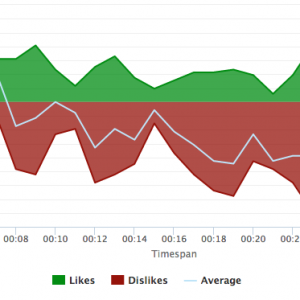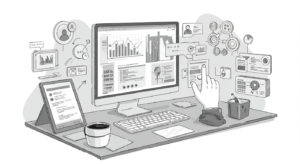Discovering the Best AI for Research

As researchers face increasingly complex data and research questions, the use of AI has become an attractive option for improving efficiency, accuracy, and effectiveness. From natural language processing to computer vision, AI technologies have the potential to transform research across fields and industries. However, with so many AI tools and platforms available, it can be challenging to determine which solutions are the best fit for your research needs. In this article, we will explore the role of AI in research, the evolution of AI technologies, the benefits and challenges of using AI, and how to select the best AI tools and platforms for your research projects.
Understanding the Role of AI in Research
AI refers to any system that can perform tasks that typically require human intelligence, such as learning, problem-solving, decision-making, and understanding natural language. In research, AI can help researchers analyze large volumes of data, recognize patterns and relationships, develop predictive models, and generate insights. AI technologies can also automate labor-intensive tasks, such as data cleaning and categorization, freeing up researchers’ time to focus on higher-level analysis and interpretation. In summary, AI can enhance the speed, accuracy, objectivity, and scalability of research processes, increasing the potential for breakthrough discoveries.
With the increasing availability of data, researchers are turning to AI as a tool to help them analyze and make sense of complex and diverse data sets. AI can help researchers to identify patterns and relationships that might be missed by humans, enabling them to gain new insights and develop more accurate predictive models. Additionally, AI can be used to automate repetitive and time-consuming tasks, such as data cleaning and categorization, freeing up researchers’ time to focus on more complex and creative tasks.
The Evolution of AI in Research
While AI has become a buzzword in recent years, its history dates back to the mid-20th century when researchers began to explore artificial neural networks and machine learning. However, AI applications in research were limited due to the lack of computing power, data availability, and AI algorithms’ immaturity. It was not until the late 1990s and early 2000s that AI began to show its potential for revolutionizing research, thanks to advancements in computing, data storage, and algorithm development. Today, AI technologies are used in various research domains, including healthcare, finance, social sciences, and environmental science.
AI has come a long way since its inception, and its potential for revolutionizing research is only just beginning to be realized. With the increasing availability of data and advancements in AI algorithms, we can expect to see AI playing an increasingly important role in research in the years to come.
Key Benefits of AI in Research
The advantages of AI in research are numerous. Firstly, AI technologies can analyze vast amounts of data in a fraction of the time human researchers would require. This saves time and labor costs, allowing researchers to focus on tasks that require creativity and expertise. Additionally, AI can analyze data without being influenced by human biases, leading to more objective and accurate findings. AI models can also identify patterns that might be missed by humans or discover hidden relationships between variables. Lastly, AI can enable researchers to make predictions and develop models that can be used for decision-making in many fields, including medicine, policy-making, and business.
One of the key benefits of AI in research is its ability to process large amounts of data quickly and accurately. This is particularly important in fields such as healthcare, where large amounts of patient data need to be analyzed to develop effective treatments and therapies. Additionally, AI can help researchers to identify patterns and relationships that might be missed by humans, enabling them to gain new insights and develop more accurate predictive models.
AI vs. Traditional Research Methods
While the benefits of AI in research are clear, it is important to acknowledge that traditional research methods still have their place. Human researchers bring unique skills and insights that cannot be replicated by machines. Moreover, AI is best suited for tasks that can be algorithmically defined, such as data analysis and pattern recognition. For research questions that require creativity, intuition, and ethical considerations, human researchers are likely to be more effective. Thus, rather than replacing human researchers, AI is better seen as a complementary tool that can augment and enhance traditional research methods.
It is important to note that AI is not a replacement for human researchers. While AI can help to automate certain tasks and provide new insights, it cannot replace the creativity, intuition, and ethical considerations that are essential to effective research. Therefore, researchers should view AI as a tool that can enhance traditional research methods, rather than a replacement for them.
Types of AI Technologies for Research
There are various types of AI technologies that researchers can use to achieve their research goals. In this section, we will explore some of the most common types of AI technologies for research.
Natural Language Processing (NLP)
NLP refers to the process of analyzing and generating human language using computers. NLP technologies can help researchers analyze large volumes of text data, such as social media posts or survey responses, and identify key themes and patterns. NLP can also be used to create chatbots for research purposes, allowing participants to interact with researchers without the need for human involvement.
For example, NLP can be used in the field of psychology to analyze the language used by individuals with certain mental health conditions. By analyzing the language used in therapy sessions or social media posts, researchers can identify patterns and gain insights into the thought processes and emotions of individuals with these conditions.
Machine Learning and Deep Learning
Machine learning refers to the use of statistical methods and algorithms to enable machines to learn and improve from experience. Researchers can use machine learning to develop predictive models, classify data, and identify complex patterns. Deep learning, a subset of machine learning, uses artificial neural networks to identify patterns and relationships in large, complex datasets, such as images or audio recordings.
In the field of healthcare, machine learning can be used to develop predictive models for patient outcomes, such as the likelihood of readmission or the risk of developing complications. These models can help healthcare providers make more informed decisions and improve patient outcomes.
Robotics and Automation
Robotics and automation technologies can be used to automate physical tasks that are repetitive, dangerous, or difficult for humans. For example, drones can be used to collect environmental data, while robots can be used to perform surgeries or experiments.
One area where robotics and automation are being used is in agriculture. Autonomous tractors and drones can be used to monitor crops, collect data on soil conditions, and even plant and harvest crops. This can help farmers increase efficiency and reduce costs.
Computer Vision
Computer vision refers to the process of enabling machines to interpret and analyze visual information, such as images or videos. Researchers can use computer vision technologies to analyze medical images, identify objects or faces, and monitor events in real-time.
In the field of transportation, computer vision can be used to develop autonomous vehicles that can navigate roads and avoid obstacles. This technology has the potential to revolutionize the way we travel and reduce the number of accidents caused by human error.
Overall, AI technologies have the potential to transform the way we conduct research and solve complex problems. As these technologies continue to evolve, researchers will have access to new tools and capabilities that will enable them to make new discoveries and improve our understanding of the world around us.
Top AI Tools and Platforms for Research
As the field of artificial intelligence continues to grow, so do the number of AI tools and platforms available to researchers. From open-source software to proprietary commercial products, there are many options to choose from. In this section, we will highlight some of the top AI tools and platforms for research.
AI-powered Search Engines
AI-powered search engines have become increasingly popular among researchers. These search engines, such as Google Scholar or Microsoft Academic, use AI algorithms to analyze and rank search results based on relevance and quality. This means that researchers can quickly and efficiently find relevant research articles, patents, and other sources of information without having to sift through countless irrelevant results.
One benefit of using AI-powered search engines is that they can also help researchers discover new research areas and potential collaborators. By analyzing a researcher’s search history and interests, AI algorithms can recommend relevant articles and researchers to connect with.
Data Analysis and Visualization Tools
Data analysis and visualization tools have long been popular among researchers. These tools can help researchers analyze and visualize large volumes of data, including unstructured data. With the help of AI algorithms, these tools can also be used to develop predictive models and conduct statistical analysis.
One advantage of using AI-powered data analysis tools is that they can help researchers identify patterns and trends in their data that might otherwise go unnoticed. For example, AI algorithms can be used to identify correlations between different variables or to uncover hidden relationships between different data points.
AI-driven Research Management Systems
Managing research papers, data, and other digital assets can be a daunting task for researchers. Research management systems can help researchers organize and manage their research more efficiently. These systems can also recommend relevant research articles based on users’ reading history and preferences.
With the help of AI algorithms, research management systems can also help researchers stay up-to-date on the latest research developments in their field. By analyzing a researcher’s reading history and interests, these systems can recommend new research articles and topics to explore.
AI-based Collaboration Platforms
Collaboration is an essential part of the research process, but it can be challenging to find the right collaborators with the necessary expertise and interests. Collaboration platforms, can help researchers connect and communicate more easily. With the help of AI technologies, these platforms can also recommend potential collaborators based on research interests and expertise.
AI algorithms can also be used to identify best practices for research ethics and to help researchers identify funding opportunities. By analyzing data from funding agencies and other sources, AI algorithms can help researchers identify potential sources of funding and develop competitive grant proposals.
In conclusion, AI tools and platforms have the potential to revolutionize the way researchers conduct their work. By leveraging the power of AI, researchers can more efficiently find relevant research articles, analyze and visualize large volumes of data, manage their research more efficiently, and collaborate more effectively with colleagues.
Evaluating AI Solutions for Your Research Needs
When selecting AI solutions for your research needs, it is important to assess various factors, such as quality, features, integration, and cost. In this section, we will provide some guidelines for evaluating AI solutions.
Assessing the Quality of AI Algorithms
AI algorithms can vary in quality depending on factors such as dataset size, data quality, and algorithm complexity. It is important to evaluate the algorithm’s accuracy, completeness, and reliability based on the specific research question and data type.
Comparing Features and Capabilities
Different AI solutions for research may offer different features and capabilities, such as NLP or computer vision. It is important to identify which features are essential for your research goals and select solutions that meet those requirements.
Integration with Existing Research Infrastructure
It is important to consider how well an AI solution integrates with your existing research infrastructure, such as data storage systems or analysis tools. This can affect the ease of implementation, the level of support required, and the potential for scaling.
Cost and Scalability Considerations
AI solutions can vary in price depending on factors such as the complexity of the algorithm and the level of support required. It is important to consider the potential return on investment and the long-term scalability of the AI solution before making a decision.
Conclusion
In summary, AI offers tremendous potential for enhancing research in various domains. However, selecting the best AI solution for your research needs requires careful evaluation of the technology’s quality, features, integration, and cost. By understanding the benefits and challenges of AI in research and selecting the right AI tools and platforms, researchers can enhance their efficiency, accuracy, and effectiveness, leading to more impactful discoveries and innovations.








